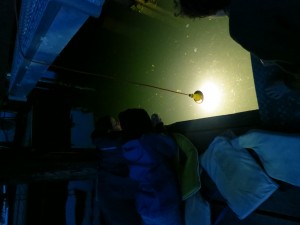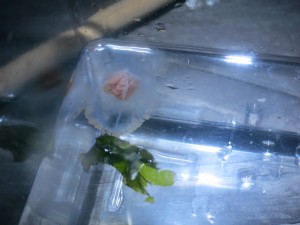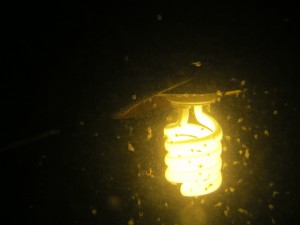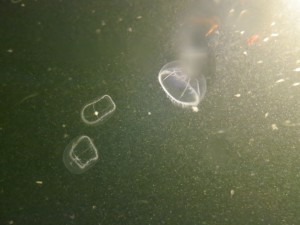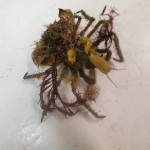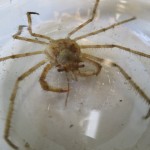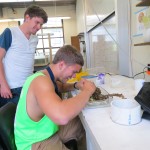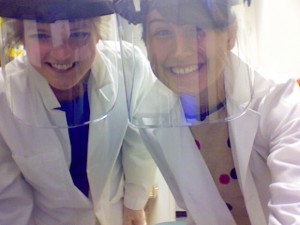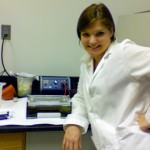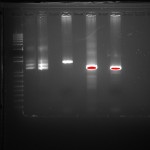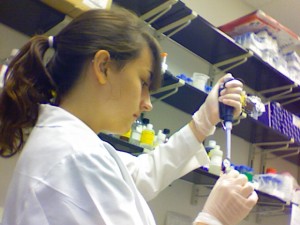Three weeks in Friday Harbor, and the time has flown by. As you may have already known both Steve and I are working on the organism Oregonia gracilis, a decorator crab. Steve is working with the larval and beginning juvenile stages. These early stages are teeny tiny little guys. About two weeks ago he needed to start collecting some of the larvae and we both just wanted to have some fun, so we decided to start the collection process. Now I don’t know about you, but from growing up just outside of Annapolis, MD when I think about catching crabs what comes to mind is tying some chicken necks to a string, throwing them in the water and waiting for a crab to grab on. Contrary to popular belief this isn’t how you catch larvae.
There are a couple different methods you can choose from to catch these larvae, but basically all of them involve seeing these tiny specks swimming around in the water and scooping them up into a plankton tow or small mesh net. However, in order to see and scoop these crabs you first have to find them. This part can be pretty tricky when you’re dealing with something that is only about a millimeter or so long in a great big sea. Luckily Biologists have a trick up their sleeve, Nightlighting.
Nightlighting is exactly what it sounds like. Once it gets dark (about 10:30 here) you take a nice big waterproof lamp and dip in just below the surface of the water. In a matter of minutes you’ll have larvae swarming the light, give it another minute or so, you’ll have shrimp, jellyfish, small fish, and every-once-in-awhile 1 ½ ft polychaetes swim by. The larvae are attracted to the light, and a lot of the other organisms are just there for some easy dinner.
With enough luck nightlighting is a very effective method for catching larvae. We have been out about 4 times since we’ve been here, and every time we manage to see something cool and new. Also after some very cold time dipping our hands in the water we took a few nice pictures.
Gotta go check on the crabs! Until next time from the West Side.

